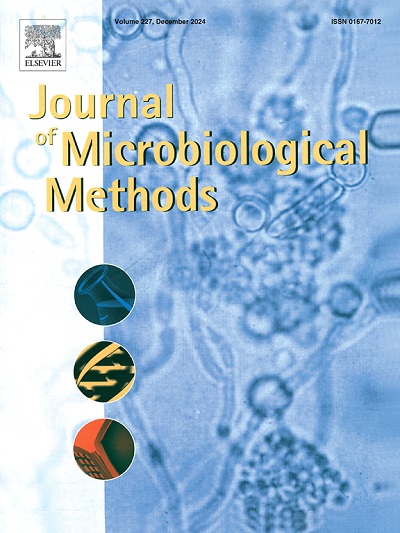CRISPR: New promising biotechnological tool in wastewater treatment
IF 1.9
4区 生物学
Q4 BIOCHEMICAL RESEARCH METHODS
引用次数: 0
Abstract
The increasing demand for water resources with increase in population has sparked interest in reusing produced water, especially in water-scarce regions. The clustered regularly interspaced short palindromic repeats (CRISPR) technology is an emerging genome editing tool that has the potential to trigger significant impact with broad application scope in wastewater treatment. We provide a comprehensive overview of the scope of CRISPR-Cas based tool for treating wastewater that may bring new scope in wastewater management in future in controlling harmful contaminants and pathogens. As an advanced versatile genome engineering tool, focusing on particular genes and enzymes that are accountable for pathogen identification, regulation of antibiotic/antimicrobial resistance, and enhancing processes for wastewater bioremediation constitute the primary focal points of research associated with this technology. The technology is highly recommended for targeted mutations to incorporate desirable microalgal characteristics and the development of strains capable of withstanding various wastewater stresses. However, concerns about gene leakage from strains with modified genome and off target mutations should be considered during field application. A comprehensive interdisciplinary approach involving various fields and an intense research focus concerning delivery systems, target genes, detection, environmental conditions, and monitoring at both lab and ground level should be considered to ensure its successful application in sustainable and safe wastewater treatment.
CRISPR:污水处理领域前景广阔的生物技术新工具。
随着人口的增加,对水资源的需求也在不断增长,这引发了人们对生产用水再利用的兴趣,尤其是在缺水地区。簇状有规律间隔短回文重复序列(CRISPR)技术是一种新兴的基因组编辑工具,有可能在废水处理领域产生广泛的影响。我们全面概述了基于 CRISPR-Cas 的废水处理工具的应用范围,它可能会在未来的废水管理中为控制有害污染物和病原体带来新的应用空间。作为一种先进的多功能基因组工程工具,该技术的研究重点主要集中在识别病原体、调节抗生素/抗菌素耐药性以及增强废水生物修复过程中的特定基因和酶。该技术被强烈推荐用于有针对性的突变,以纳入理想的微藻特性,并开发出能够承受各种废水压力的菌株。不过,在实地应用过程中,应考虑到基因组改造后菌株的基因泄漏和非目标突变问题。为确保该技术在可持续和安全的废水处理中得到成功应用,应考虑采用一种涉及多个领域的跨学科综合方法,并在实验室和地面上对输送系统、目标基因、检测、环境条件和监测等方面进行深入研究。
本文章由计算机程序翻译,如有差异,请以英文原文为准。
求助全文
约1分钟内获得全文
求助全文
来源期刊

Journal of microbiological methods
生物-生化研究方法
CiteScore
4.30
自引率
4.50%
发文量
151
审稿时长
29 days
期刊介绍:
The Journal of Microbiological Methods publishes scholarly and original articles, notes and review articles. These articles must include novel and/or state-of-the-art methods, or significant improvements to existing methods. Novel and innovative applications of current methods that are validated and useful will also be published. JMM strives for scholarship, innovation and excellence. This demands scientific rigour, the best available methods and technologies, correctly replicated experiments/tests, the inclusion of proper controls, calibrations, and the correct statistical analysis. The presentation of the data must support the interpretation of the method/approach.
All aspects of microbiology are covered, except virology. These include agricultural microbiology, applied and environmental microbiology, bioassays, bioinformatics, biotechnology, biochemical microbiology, clinical microbiology, diagnostics, food monitoring and quality control microbiology, microbial genetics and genomics, geomicrobiology, microbiome methods regardless of habitat, high through-put sequencing methods and analysis, microbial pathogenesis and host responses, metabolomics, metagenomics, metaproteomics, microbial ecology and diversity, microbial physiology, microbial ultra-structure, microscopic and imaging methods, molecular microbiology, mycology, novel mathematical microbiology and modelling, parasitology, plant-microbe interactions, protein markers/profiles, proteomics, pyrosequencing, public health microbiology, radioisotopes applied to microbiology, robotics applied to microbiological methods,rumen microbiology, microbiological methods for space missions and extreme environments, sampling methods and samplers, soil and sediment microbiology, transcriptomics, veterinary microbiology, sero-diagnostics and typing/identification.
 求助内容:
求助内容: 应助结果提醒方式:
应助结果提醒方式:


